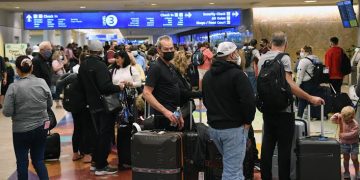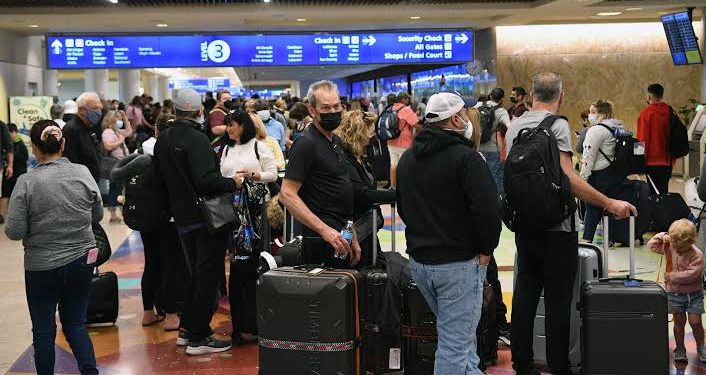By Oyintari Ben
Flight cancellations, delays, and other transportation issues persisted on Christmas Day as most of the United States was still feeling the effects of a winter storm that lasted for nearly a week.
By 10 p.m. ET on Sunday, more than 2,800 flights entering, into, or out of the United States had already been cancelled, according to the flight tracking website FlightAware. And there were about 6,700 flights that were delayed but were able to take off. Christmas Day has historically seen few passenger flights.
The two airports that were most severely impacted on Christmas Day were located in the Deep South and the West, illustrating the storm’s immense size and wide-ranging effects.
As of 10 p.m. Sunday, Hartsfield-Jackson Atlanta International (ATL), the busiest airport in the world for passenger traffic, had the second-highest number of cancellations and delays.
However, the storm’s effects are starting to fade in some areas of the West. Denver International had a temperature of 38°F (3°C) around 8 p.m. MT, which was still above freezing.
Buffalo Niagara International Airport (BUF) announced through Twitter that it would extend its initial closure, which was scheduled to conclude at 11 a.m. Monday, until Tuesday, December 27.
According to the National Weather Service, the temperature at BUF at 10 p.m. ET was 20°F (-7°C) with winds blowing at 24 mph.
The timing of the enormous storm’s arrival was unfortunate for passengers who had begun to reduce flying during Christmas week to pre-pandemic levels. FlightAware reports that there were 3,487 flights cancelled on Christmas Eve. The worst day was Friday with 5,934 cancellations, followed by Thursday with nearly 2,700 cancellations.
It is anticipated that this massive winter storm will gradually abate throughout the final week of the year across the eastern two-thirds of the country. There were still more than 260 precautionary cancellations for Monday as of 5:30 p.m. ET.

































